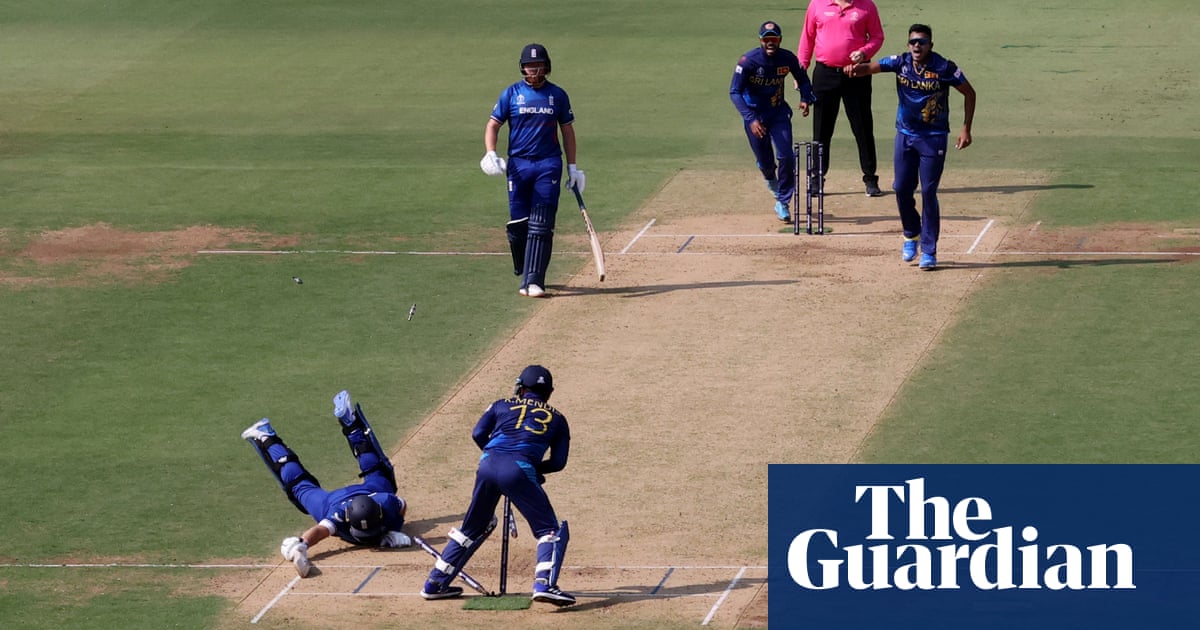
n the summer of 2018 Sam Curran’s bat morphed into an épée and his waspish left-arm swing picked locks at crucial times as England swept to a 4-1 Test series victory over India. Surrey’s academy had polished up a gem for the national team and, after the 20-year-old was named player of the series, his first Test central contract soon followed.
But Curran’s rewards for two gamechanging half-centuries and 11 wickets, in a season when England won every Test he played, did not end there. Downing India with such panache also caught the eye of Indian Premier League franchises and at the next auction a bidding war broke out between Royal Challengers Bangalore and Kings XI Punjab, the latter winning out with an £800,000 bid.
A hat-trick and a strike rate of 172 with the bat made for a promising first season in Indian cricket’s great tamasha but the market corrected itself slightly. Curran went back under the hammer and joined Chennai Super Kings for a still none-too-shabby £590,000. MS Dhoni’s side finished second from bottom in 2020’s delayed campaign but Curran impressed enough to be retained for two more months starting in April.
Before then Curran is back with the England setup in Ahmedabad as part of the Twenty20 squad soaking up five games of experience in India before the World Cup in October and November. He is still paid roughly £650,000 a year to play Test cricket but, after featuring in the 2-0 win in Sri Lanka, he sat out the entire 3-1 defeat in India, rested for the first three games as part of the rotation policy and then unable to make a slated return for the fourth when travel problems held sway.
Ed Smith, the national selector, had said all-format players such as Curran, Ben Stokes and Jos Buttler would be given a break during the three-month subcontinental winter regardless of the IPL. However, when Curran’s delayed return was announced, and the question was asked why his initial three-Test break was longer than others, a spokesperson replied that he had spent a long time in bubbles since last summer and needed “switch-off time”, with the IPL listed as a contributing factor.
“The task of flying to Sri Lanka, playing all four Tests in India, playing IPL and then straight into the summer was probably going to be five months straight in a bubble and the players have to get out,” Curran said on Monday.
“Coming back after my break, I do feel really refreshed and raring to go for this white-ball series. There’s been a lot of stuff spoken about rotation. As a player, I’ve found it beneficial.”
Now you can argue the toss about how much Curran would have played in a full-strength England Test team in India – just ask his fellow all-rounder Chris Woakes, who has not turned out for his country since being named man of the summer last year – and it is highly doubtful he would have changed the result. Nevertheless, here was the breakout player of the 2018 series sitting out the rematch to accommodate the tournament those performances alerted.
This is not to blame Curran. Careers in professional sport are short and the IPL cannot be ignored by way of pro-rata remuneration and self-improvement (see Stokes at Headingley in 2019, or Rishabh Pant’s electric century last Friday). Nor should he have been forced to plough through an entire winter of hotels and cricket grounds. That road leads to the “zombies” that Virat Kohli felt his India players had become before a heavy defeat in the first Test in Chennai – and the return of crowds – jolted them back into life.
Still, his case highlights how England have not just lost full control of their senior players but how the career paths of younger, less-established cricketers have also become a custody battle. Moeen Ali and Jonny Bairstow have drawn some ire for their IPL allegiances, despite neither having red-ball deals, but a Test-contracted rookie being handed tours off because a domestic tournament is a non-negotiable? That should be a louder alarm bell where the health of England’s international offering is concerned.
The pandemic has left English cricket even thirstier for broadcasting money but ladling more fixtures on top is akin to quenching this with saltwater. The IPL is not going anywhere either.
Once the backlog of postponed games is shifted over the next 12 months – England’s men still have 43 bilateral matches from now to the end of the Caribbean tour in March 2022, as well as the T20 World Cup – those in charge must draw up a calendar that ensures international offerings and the IPL can coexist without the latter diluting the former.
They must accept that less is more, that quality trumps quantity. If not, talents such as Curran, beamed up to the IPL starship by his initial exploits in Test cricket, will continue to miss England series for rest and leave the audience feeling short-changed.












